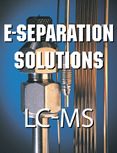Ask the Editor: Preparative GC Applications
What are some examples of preparative GC applications? According to R.P.W. Scott in Gas Chromatography (1), ?[t]here are a number of unique problems associated with preparative gas chromatography. Firstly, it is difficult to recycle the mobile phase and thus large volume of gas are necessary. Secondly, the sample must be fully vaporized onto the column to ensure radial distribution of the sample across the column. Thirdly, the materials of interest are eluted largely in a very dilute form from the column and therefore must be extracted or condensed from the gas stream which is also difficult to achieve efficiently.?
An LCGC reader recently submitted the following question:
What are some examples of preparative GC applications?
According to R.P.W. Scott in Gas Chromatography (1), “[t]here are a number of unique problems associated with preparative gas chromatography. Firstly, it is difficult to recycle the mobile phase and thus large volume of gas are necessary. Secondly, the sample must be fully vaporized onto the column to ensure radial distribution of the sample across the column. Thirdly, the materials of interest are eluted largely in a very dilute form from the column and therefore must be extracted or condensed from the gas stream which is also difficult to achieve efficiently.”
Preparative GC has been used for a variety of applications, including odorants in white wine (2), amino acids in tissue hydrolysates (3), polycyclic aromatic hydrocarbons (4), cockroach sex pheromone (5), and essential oil constituents (6).
(1) R.P.W. Scott, Gas Chromatography, http://www.chromatography-online.org/GC/Preparative-Gas-Chromatography/rs60.html.
(2) H. Shiratsuchi, and H. Matsusaki, Aroma Research 6(2) 188â194 (2005).
(3) K. Smith, C.M. Scrimgeour, W.M. Bennet, and M.J. Rennie, Biol. Mass Spec. 17(4), 267â273 (1988).
(4) M. Mandalakis and Ã. Gustafsson, J. Chromatography A 996(1-2), 163â172 (2003).
(5) S. Nojima, C. Schal, F.X. Webster, R.G. Santangelo, and W.L. Roelofs, Science 307(5712), 1104â1106 (2005).
(6) M. Mekem Sonwa and W.A. König, Phytochemistry 56(4), 321â326 (2001).
Questions?
LCGC technical editor Steve Brown will answer your technical questions. Each month, one question will be selected to appear in this space, so we welcome your submissions. Please send all questions to the attention of "Ask the Editor" at lcgcedit@lcgcmag.com We look forward to hearing from you.

Determining the Effects of ‘Quantitative Marinating’ on Crayfish Meat with HS-GC-IMS
April 30th 2025A novel method called quantitative marinating (QM) was developed to reduce industrial waste during the processing of crayfish meat, with the taste, flavor, and aroma of crayfish meat processed by various techniques investigated. Headspace-gas chromatography-ion mobility spectrometry (HS-GC-IMS) was used to determine volatile compounds of meat examined.
University of Tasmania Researchers Explore Haloacetic Acid Determiniation in Water with capLC–MS
April 29th 2025Haloacetic acid detection has become important when analyzing drinking and swimming pool water. University of Tasmania researchers have begun applying capillary liquid chromatography as a means of detecting these substances.
Using GC-MS to Measure Improvement Efforts to TNT-Contaminated Soil
April 29th 2025Researchers developing a plant microbial consortium that can repair in-situ high concentration TNT (1434 mg/kg) contaminated soil, as well as overcome the limitations of previous studies that only focused on simulated pollution, used untargeted metabolone gas chromatography-mass spectrometry (GC-MS) to measure their success.

.png&w=3840&q=75)

.png&w=3840&q=75)



.png&w=3840&q=75)



.png&w=3840&q=75)







